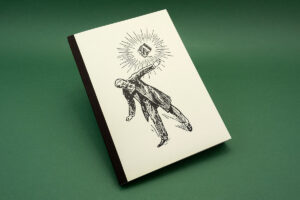YOUR CART
- No products in the cart.
Subtotal:
€ 0

Visual compilations and photography:
Oliver Leu
Editing:
Oliver Leu
Carel Fransen
Introduction:
Matthew G. Stanard
Essay:
Bambi Ceuppens
Captions:
Oliver Leu
Translations:
Oliver Leu (Éric Vuillard quote)
Sam De Wilde (African News cartoon)
Proofreading:
Cath Phillips
Design:
Carel Fransen
Lithography:
Mariska Bijl (Wilco Art Books)
Production:
Jos Morree (Fine Books)
Print and binding:
Wilco Art Books (NL)
Supported by:
Fondation Fernand Willame
Hörmann KG Verkaufsgesellschaft
Leopold’s Legacy is a reflection on both the visible representations of colonialism in present-day Belgium, and the hidden traces of its gruesome past. Oliver Leu (DE) presents an eclectic collection of visual research, focusing on various topics from colonial monuments and prestigious architecture to antique postcards and collaged sculptures for alternative monuments. All these remnants of a once glorious past paint a wry story of decades of structural exploitation and genocide, and demonstrate how in Europe our collective perception of these events is gradually changing.
At the Berlin Conference in 1885, King Leopold II of Belgium was proclaimed the founder and sole owner of the Congo Free State, by convincing the colonial nations of Europe to commit to common trade and improving the lives of the native inhabitants. But in reality he extracted a fortune from the territory. Initially by the collection of ivory, but since the invention of the rubber wheel by Dunlop in 1888, mostly by exploiting the Congolese people to harvest and process rubber. His administration of the Congo was characterised by forced labour, torture and murder, causing the deaths of millions of Congolese people. A large part of the monetary gains from this exploitation was spent on public and private construction projects in Belgium that are often still part of our urban space.
With Leopold’s Legacy, Leu paints the portrait of an ambitious ruler with delusions of grandeur, and the influence the exploitation of his private colony still has on his home country today.
Including an introductory text by Professor of History, Matthew G. Stanard, and an extensive essay by Bambi Ceuppens, researcher and curator at the Royal Museum for Central Africa in Tervuren.
Oliver Leu studied Comparative Theology and Indology before turning to photography. He trained as a photographer at the University of Applied Sciences in Bielefeld (Germany). In his artistic practice he is concerned with questioning religion, the construction of history, the abuse of power and the consequences of colonial pasts.
“As Ceuppens points out, such imagery is designed to make its target audience (white Europeans) feel bad instead of inviting them to try to understand and share the pain of those at the receiving end of violence: ‘By contrast, artworks, diaries, drawings, mundane objects and photographs that speak about the everyday life of victims […] have the power to remind us of our common humanity.’ History is a complex entity, and it is constant need of being amended or re-written. There is no such thing as fixed history. In my own life time, I have witnessed and experienced very drastic changes, speaking just about the country I was born in.” (Jörg Colberg)